Blood Moon (May 26): Schedule, How to Watch and Photograph
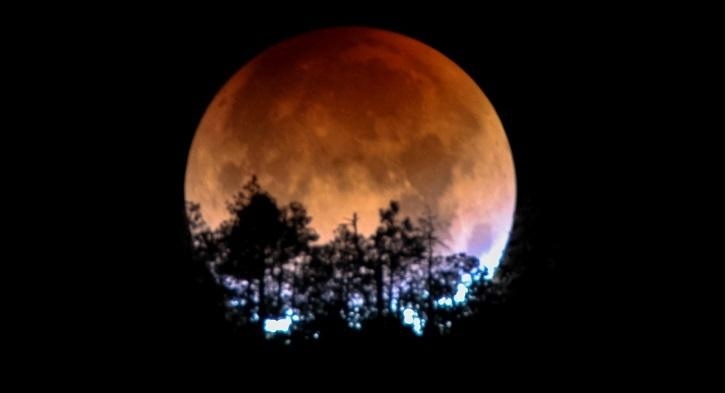 |
| Total lunar eclipses take place when the Sun, the Moon and the Earth are aligned in a straight line. Photo India Times |
Astronomy enthusiasts will be able to see the first total lunar eclipse of this year on May 26. Considered as the most beautiful cosmic phenomena, the total lunar eclipses are also known as Blood Moon since it appears slightly reddish-orange due to the dispersed light falling on the face of the moon (in the middle of the eclipse) from Earth’s sunrise and sunsets. During this phenomenon, the moon’s colour depends on dust particles and different wavelengths of colours which reach its surface.
During a total lunar eclipse, the Earth lines up between the Moon and the Sun and hence, hides the Moon from the sunlight. When the Sun, the Moon and the Earth align in a straight line, the phenomenon of total lunar eclipses takes place. According to the National Aeronautics and Space Administration (NASA), in total lunar eclipse or Blood Moon, the Earth comes in between the Sun and the Moon. The Earth blocks the sun rays from reaching the moon. The phenomenon takes place only on the Full Moon and can be seen with a naked eye, unlike the solar eclipse.
What is a total lunar eclipse?
Total lunar eclipses take place when the Sun, the Moon and the Earth are aligned in a straight line. The Earth comes in between the Sun and the Moon and in turn, blocks the sun rays from reaching the moon in case of a total lunar eclipse.
This eclipse occurs only on the Full Moon. You can, however, look at a lunar eclipse with a naked eye, unlike the solar eclipse.
What is Blood Moon?
The term blood moon comes from the eclipsed moon’s reddish appearance caused by the light from the Earth’s sunrise and sunset falling on the surface of the moon.
Explains it this way:
“During a total lunar eclipse, the Earth blocks the Sun’s light from reaching the Moon.
“While the Moon remains completely within Earth’s umbral shadow, indirect sunlight still manages to reach and illuminate it. However, this sunlight must first pass deep through the Earth’s atmosphere which filters out most of the blue colored light.
“The remaining light is a deep red or orange in color and is much dimmer than pure white sunlight. Earth’s atmosphere also bends or refracts some of this light so that a small fraction of it can reach and illuminate the Moon.”
The moon can take on a range of colors from dark brown and red to bright orange and yellow, the website explains. The exact appearance depends on how much dust and clouds are present in Earth’s atmosphere.
The eclipse should be able to be seen in eastern Asia, Australia, the Pacific region and North and South America.
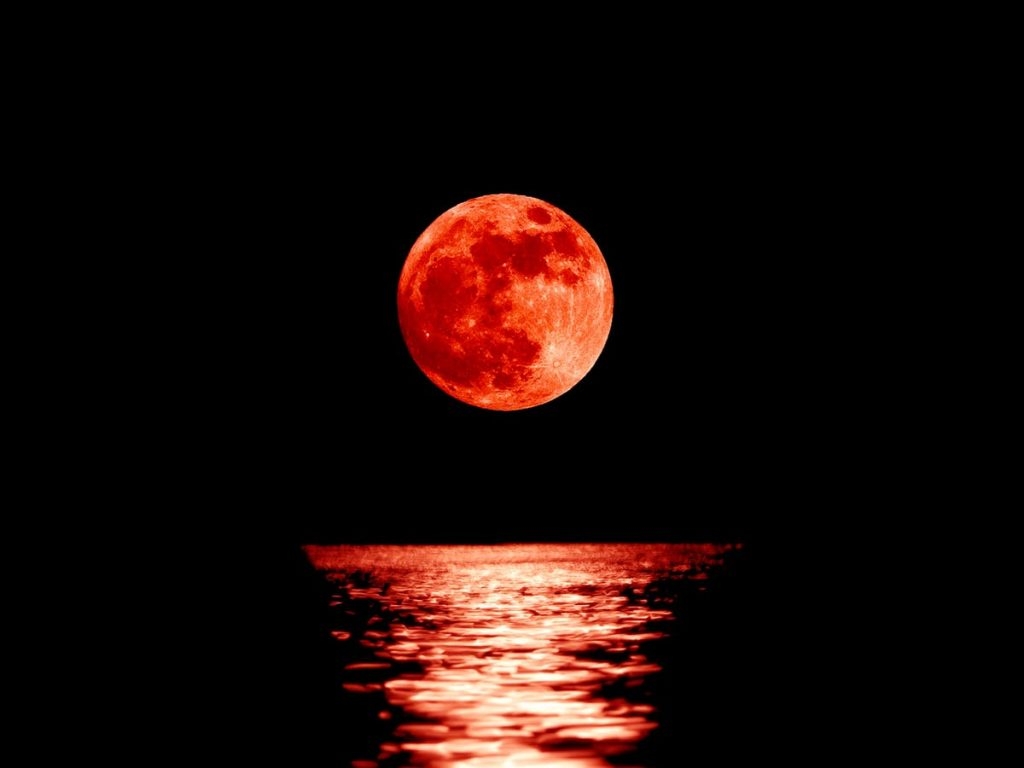 Facts About Blood Moon: Unusual Color, Spiritual Meaning, Myths & Legends Facts About Blood Moon: Unusual Color, Spiritual Meaning, Myths & Legends There are several things about Blood Moon that we don’t know. This article will provide you more knowledge on this phenomenon: Unusual Color, Spiritual Meaning, ... |
When is Blood Moon?
The blood moon total eclipse will be the first one since Jan. 21, 2019, Fox23 reported.
The eclipse will be at its peak at around 6:31 a.m. EST on May 26.
**READ MORE: When You can See "Wolf Moon" anh How to Watch - The first full moon of 2021
Where can you see the Blood Moon on May 26?
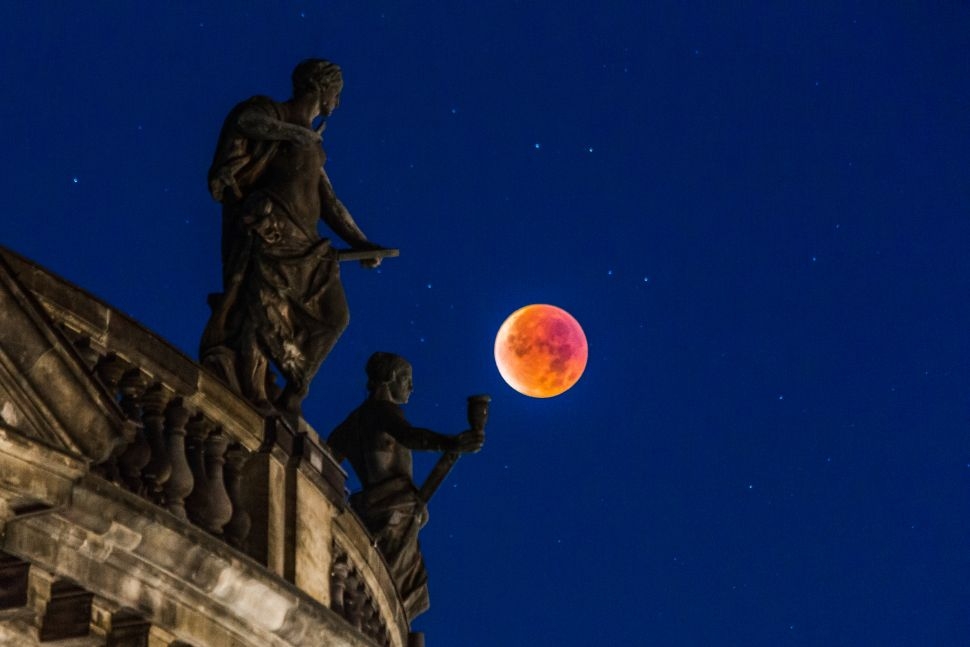 |
| Photo Getty |
This ‘Blood Moon’ will be most easily seen in its entirety from the West Coast of the U.S., Mexico and South America (just before moonset in the west, close to dawn), Hawaii, Australia and New Zealand (high in the sky in the middle of the night) and eastern Asia (just after moonrise in the east, close to dusk) – essentially around the Pacific Rim. However, those in central North America will be able to see some of the total phase just before the Moon sinks in the west.
Will you see it? You can easily find out exactly what time the ‘Blood Moon’ will be visible from any location. Ignore the times for the ‘penumbral’ eclipse (the Moon merely dulls slightly as it enters Earth’s fuzzy outer shadow), but be outside for the 87 minutes long ‘partial’ eclipse to watch the Moon start to go red. The division between bright and dark red can make an excellent close-up.
However, ‘total eclipse begins’ is the time you need to be ready for – and that’s 11:11 Universal Time on May 26 2021. Take into account how high the Moon will be in the sky (its altitude) and also note its compass direction. One interactive Google Map of this eclipse has useful links to PeakFinder (hit the ‘U2’ and ‘MAX’ links in the pop-up data boxes).
You can also sort out your angles and the position of the Moon in the sky from wherever you are by using The Photographer's Ephemeris (TPE) and PhotoPills.
| According to NASA, the term "supermoon" was coined by astrologer Richard Nolle in 1979 and refers to either a new or full Moon that occurs when the Moon is within 90% of perigee, its closest approach to Earth. Since we can't see a new Moon (except when it passes in front of the Sun), what has caught the public's attention in recent decades are full supermoons, as these are the biggest and brightest full Moons for the year. But here's the best news: "The farther west you are, the more of the eclipse you'll be able to see before the Moon sets that morning. Those in the western half of the country will be able to see almost the entire eclipse," according to NASA. |
How to photograph the Blood Moon?
Total lunar eclipses are often long, lazy spectacles where you can try a few things out, fail, and try again. Not so this one, so you need to make a plan and practice beforehand focusing your camera and changing settings manually.
A ‘Blood Moon’ is much easier to photograph than a solar eclipse, but this one is very short; you have less than 15 minutes to get a good shot of a copper-colored lunar surface. What’s more, the Moon’s path will just skim near the inner edge of the Earth’s dark shadow, so the top half of the Moon is expected to remain rather bright.
The most important thing you need? A clear sky. This is your number one priority. Check the weather reports and be mobile in the hours beforehand to maximize your chances. The west coast of the United States and Hawaii have the highest chances.
How to photograph the Blood Moon and the Milky Way?
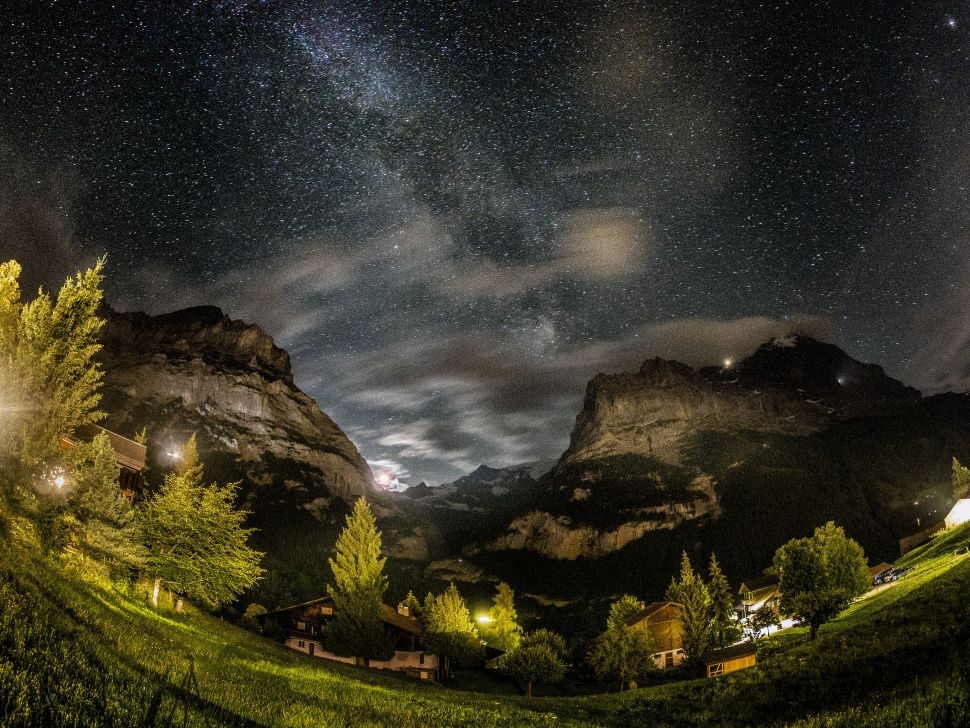 |
| Photo digitalcameraworld |
Night landscape with total eclipse of Moon and Milky Way, Switzerland, 2019 (Image credit: Getty Images), according to digitalcameraworld.
A nice bonus during a total lunar eclipse that often gets overlooked is how the Milky Way often appears as the Moon’s bright light is dulled. The Milky Way is usually photographed during a new moon, but a total eclipse allows you to shoot our galaxy in a different way. During the eclipse the Moon will be in Scorpius, about 20º west of our galaxy’s arc, so from a dark sky site your camera may be able to find the summer Milky Way just for a few minutes during totality. So consider a second camera fitted with a wide-angle lens at its wide aperture, and shoot at ISO 400 with varying – but much longer – shutter speeds of up to 30 seconds.
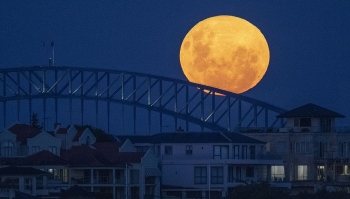 Qantas's Supermoon Flight: Ticket Price, Schedule, Passenger and Lunar Views Qantas's Supermoon Flight: Ticket Price, Schedule, Passenger and Lunar Views Qantas airlines offers passengers chance to see supermoon from sky or flight to nowhere during Covid-19 pandemic. What is Supermoon Flight: Ticket Price, Date&Schedule, ... |
 Unregconizable Leonardo DiCaprio in “Killers of The Flower Moon”: Release Date, Plot and Cast Unregconizable Leonardo DiCaprio in “Killers of The Flower Moon”: Release Date, Plot and Cast Famous actor Leonardo DiCaprio has been in many iconic roles through the years, ever since his role in Titanic movie, and his fans are eager ... |
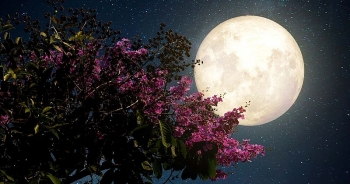 Super Flower Moon: When, Where And How to Watch this May Super Flower Moon: When, Where And How to Watch this May The next full Moon will rise later this May, which is called Super Flower Moon. Let's check its schedule, how to watch and where to ... |
 What is Snowmoon: Name Origin, Date, Time and Interesting Myths What is Snowmoon: Name Origin, Date, Time and Interesting Myths It is predicted that there would be a super full moon called "Snowmoon" on Saturday, February 27 2021. Read the article below for more information ... |



























